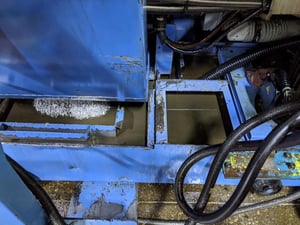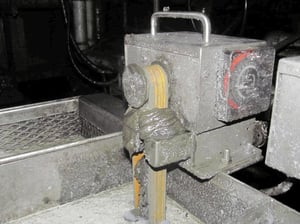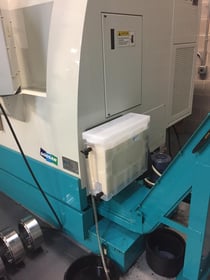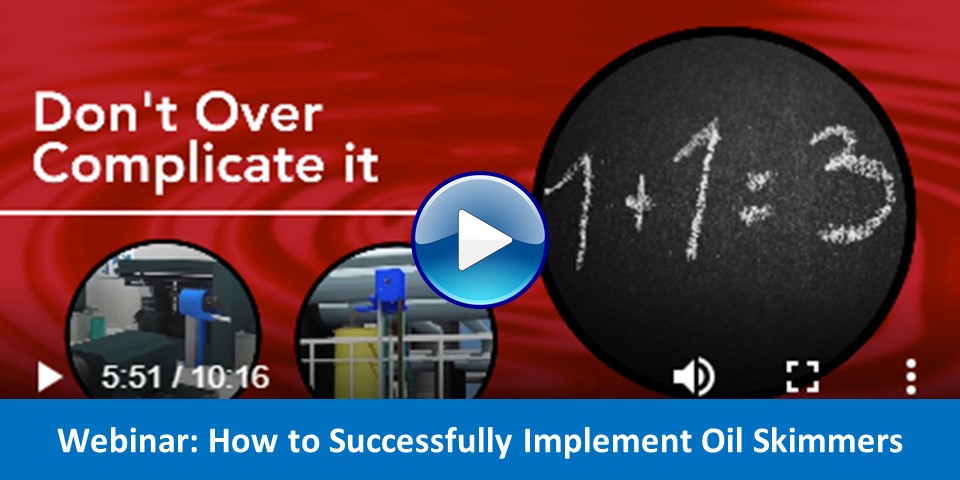 Tramp oil is a term that describes any unwanted hydrocarbon-based substance that contaminates machine coolant. This issue occurs mostly metalworking and manufacturing industries. Tramp oils can lead to numerous problems that affect work environment safety, production efficiency, and the cost control abilities.
Tramp oil is a term that describes any unwanted hydrocarbon-based substance that contaminates machine coolant. This issue occurs mostly metalworking and manufacturing industries. Tramp oils can lead to numerous problems that affect work environment safety, production efficiency, and the cost control abilities.
What causes Tramp Oil?
How do these hydrocarbon-based substances find their way into a coolant sump?
There are a few different avenues.
Machining centers employ various linear motion and rotary motion components such as bearings, slides, ball screws, and spindles that require lubrication to function efficiently. Over time, these lubricants can find their way to the machining center platform where they mix with cutting fluid or coolant.
Another source of contamination is from the materials being processed in the machining center. Most stock metals have a corrosion prevention coating which is typically oil based. If the oil based coating is not removed prior to machining, it will end up mixing with the coolant.
Problems Associated with Tramp Oils
Tramp oil contaminated coolant causes a variety of problems if not separated and removed.
First, the coolant’s performance ability suffers. This is because oil in coolant reduces the coolant fluid’s ability to reduce temperatures effectively. Any oil that is present in the cutting fluid will promote heat generated by the tool, which can shorten tool life considerably.
Another consequence of oil coming in contact with a hot cutting tool is smoke. At high temperatures, the oil can become hot enough to burn. This can create unsafe working conditions.
When left alone, tramp oils that settle in coolant become breeding grounds for anaerobic bacteria. The oil essentially prevents oxygen from mixing with the coolant, which can promote the growth of anaerobic bacteria. Workers who come in contact with these bacteria are susceptible to contact dermatitis. The bacteria can also generate hydrogen sulfide gas, which emits an unpleasant rotten egg odor.
Removal & Separation Solutions
There are two common methods for removing tramp oils from coolant. These are coalescers and oil skimmers.
 Coalescers consolidate small oil particles into larger droplets. Filters or baffles are then gather larger droplets for removal. Coalescers are a good option for larger area applications as they have greater collection area than skimmers.
Coalescers consolidate small oil particles into larger droplets. Filters or baffles are then gather larger droplets for removal. Coalescers are a good option for larger area applications as they have greater collection area than skimmers.
Skimmers utilize the differing specific gravities between oil and coolant/water to remove tramp oils. A motor driven belt that is typically constructed of an oleophilic, or oil attractant material, is placed into a coolant sump or reservoir. As the belt moves through the coolant, it attracts tramp oils. The oil is scraped off by a wiper and deposited into a container.
To learn more about oil skimmers, please contact our experts at 440-543-7400 or visit our website: www.abanaki.com
Abanaki has a new reference that can help you choose the right skimmer and the right size to ensure years of worry-free operation.

Click button below to access our “How to Successfully Implement Oil Skimmers” webinar to learn how to get the most out of your skimmer.



